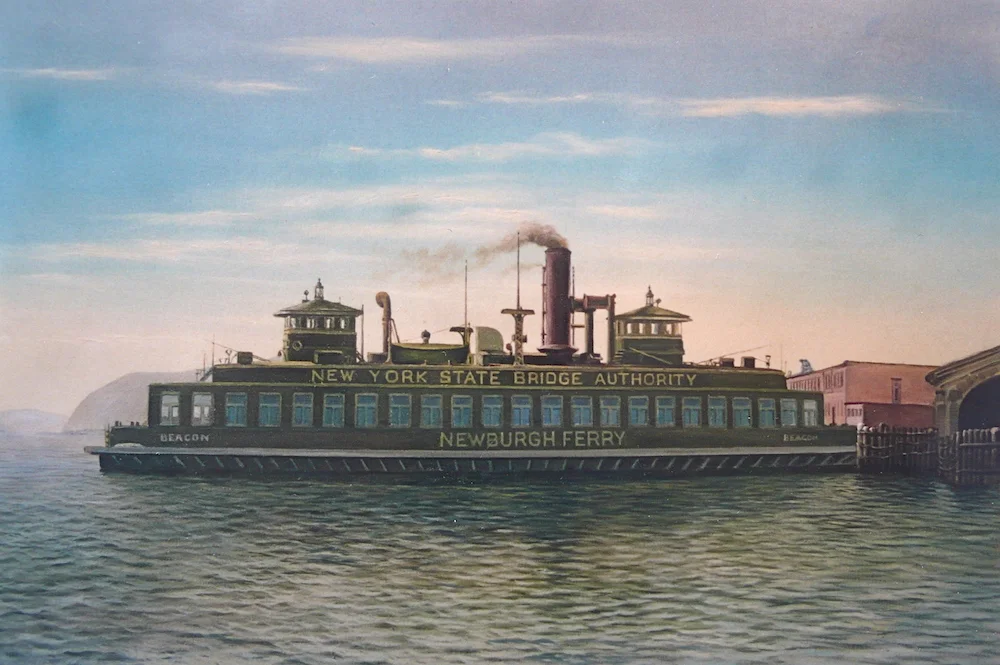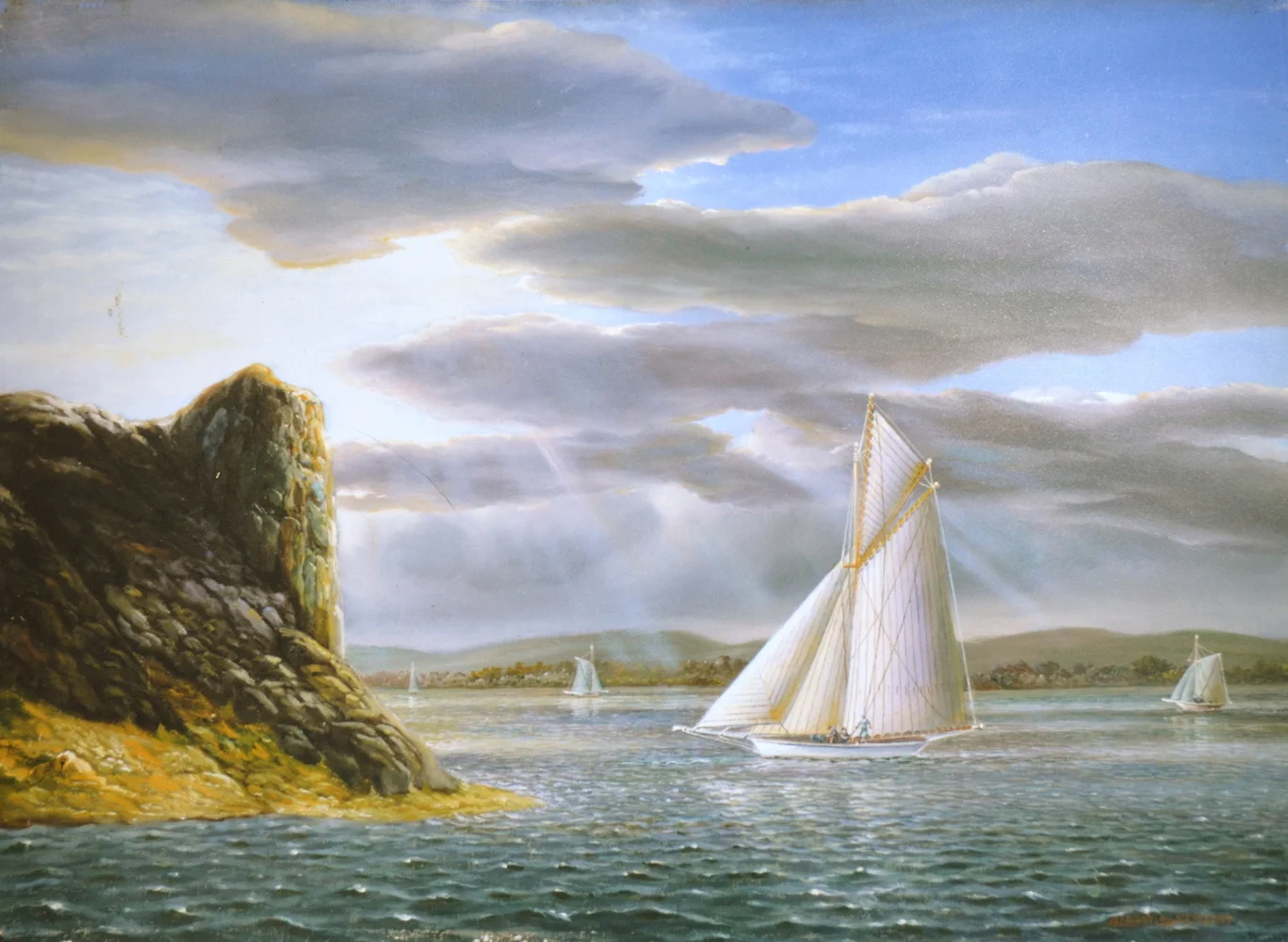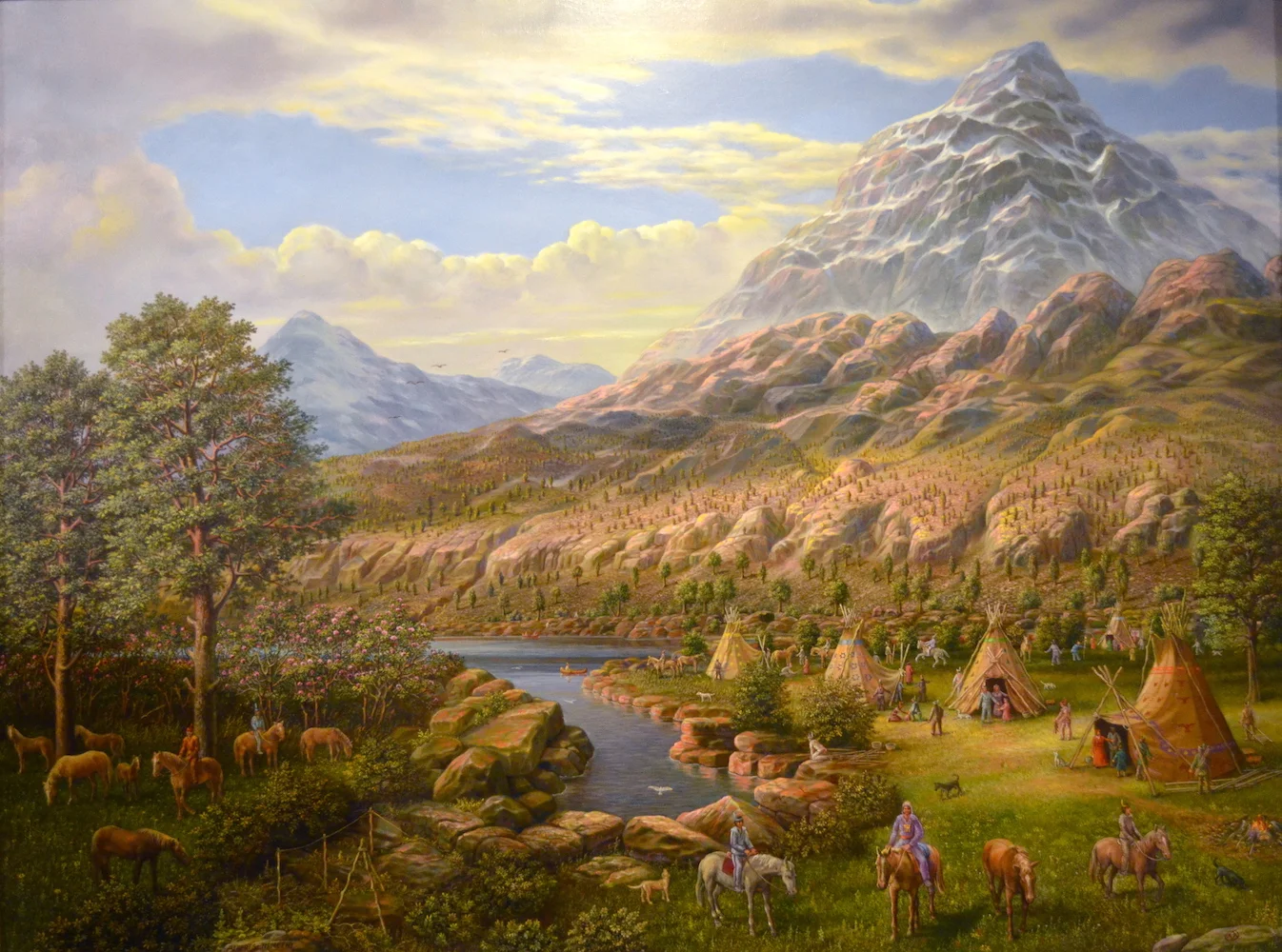Albert Nemethy
Albert Nemethy (Albert Szatmar Nemethy) was born on March 31, 1920 in Budapest, Hungary. As a young Jewish boy he realized a gift for art that animated his thoughts and artworks throughout his life. Largely self-taught, he sought inspiration in the old masters, yet always strove to express his own ideas. Even thought he was blind in his left eye since an early age, Nemethy was educated at the Academy of Art in Budapest. He and his wife Georgina and family, moved to Salzburg, Austria in 1948, and then to Munich, Germany, where they stayed for two and half years. There he was chosen the “First Artist” out of a group of 600 artists in 1950 and was given an opportunity to exhibit at the National Gallery at Munich, Germany.
In 1951 the Nemethy family of 6 children came to the United States, settling first in Montclair New Jersey. Nemethy was especially interested in the Hudson River Valley School, and he came to public attention primarily through his exquisitely detailed paintings of Hudson River steamboats depicting life during that time and modes of transportation for commerce and pleasure in the manner of James Bard. Out of homage to the Hudson River School artists, he also painted landscapes, then portraits, and genre scenes. Painting almost every day and far into the night, he produced thousands of paintings.
His work of art is unrivaled and unparalleled in subject, color, design and illustrative power. His art is traditional in technique and highly philosophical in aim. Much of his inspiration comes from the Old Testament once declaring "We are able to see the past much better than the present”. Nemethy had other talents besides painting. While in Germany he passed a test on organ building and for many years worked on designs for organs to be built along methods entirely unique in the musical world. He also had a working knowledge of woodworking and masonry.
Albert Nemethy specialized in painting murals for factories, churches, plant lobbies and various companies. Several were painted in New York City, including Worthington Corporation on Park Avenue, New York. These murals, although highly sophisticated, harmonize with their surroundings. In these delightful renderings, he usually depicted science, music, life, time, water, love and transformation of form in modern art. Besides murals, Nemethy also specializes in portraits and landscapes, with a distinct style all of his own and he refers to this style as “psychic realism”. While his works does not have any artistic kinship with one of the most celebrated painters, Salvador Dali, many of his admirers recall Dali’s art. However, he has nothing in common with Dali’s "bizarre weirdness". He is a painter of Life, Nature, Humanity, Love, Flowers, and Music.
In the more recent years his painting subjects widened considerably to include grand landscapes of the American west in the manner of Bierstadt and what he cared about most, his paintings of “moralism”. Where his fertile mind gave expression to a complex philosophy of the role of human life in the universe, a legacy he wished to present to the public and to be remembered by.
As an international artist he received membership in the Munich Academy of Art in Munich in 1950. Also his paintings were exhibited at the U.S. Military Academy at West Point and at the Temple Hill Museum and Lodge in Vails Gate, New York. A piece painting depicting the Washington statue situated in Budapest's City Gardens decorates now the White House in Washington. With important international donations like the paintings “Chaikovsk’s Symphony” and portrait to “President Mihail Gorbachev” to the people of Russia. Nemethy painted and presented to President Richard Nixon several works, one of which was to commemorate the bi-centennial of the United States of America.
Given the vast quantity of works he produced, now residing in collections around the nation and abroad, many of them unsigned, his legacy will all be uncovered for years to come. Near to his last days, his enthusiasm for painting did not diminish, he died on September 3, 1998 and he was buried in his native Budapest, leaving us an extraordinary legacy of art.







